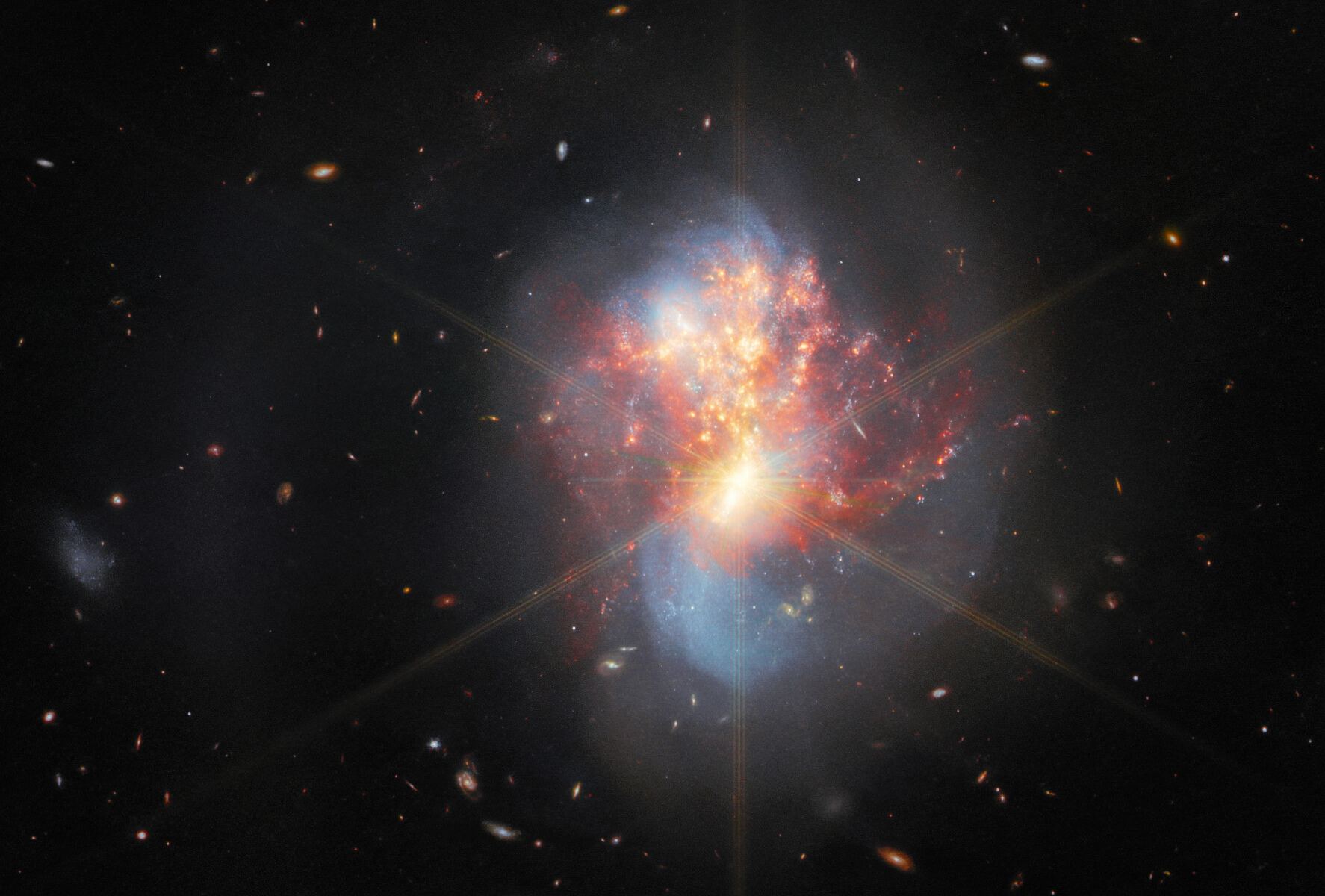Earlier this month we asked, what could be better than a pair of galaxies observed by a pair of iconic space telescopes? Now, there is an exciting new answer. Even better than a pair of galaxies is a pair of galaxies that are colliding!
The Hubble Space Telescope and the James Webb Space Telescope have each taken a look at a pair of intertwined galaxies that are 270 million light-year away from Earth, together called IC 1623. Scientists say this galactic collision has ignited frenzied star formation called a starburst, creating new stars at a rate more than 20 times that of our Milky Way.
Astronomers have long anticipated having the two iconic telescopes work in tandem. At first glance, it might be hard to tell which telescope took which image – both are beautiful.
But JWST’s image includes the prominent diffraction spikes which we’ve come to know and expect from the new telescope. The 6-pronged, snowflake-like diffraction spikes are created by the interaction of bright starlight with the physical structure of the telescope. Here, the bright core of the galaxy merger combined with Webb’s ability to pierce through the gaseous shroud obscuring the bright starlight create the spikes, which appear right on top of the galaxy in this image.

On the other hand, Hubble’s image of this interacting galaxy system show’s HST’s familiar signature bright-pink colors that – throughout the years – we’ve come to know as active regions where stars are forming. Hubble’s Advanced Camera for Surveys (ACS) can study star formation at visual wavelengths in luminous and ultra-luminous infrared galaxies, and combining data from Hubble’s ACS and the Wide Field Camera 3 (WFC3) shows the view in visible light, where the centers of the individual galaxies are much more obscured by dark dust. Their cores of the two galaxies are pale blue and their spiral arms can be seen merging together.
IC 1623 is an interacting galaxy system that is very bright when observed in the infrared. This makes it a great target for proving JWST’s Webb’s ability to study luminous galaxies. The European Space Agency explained that a team of astronomers captured IC 1623 across the infrared portions of the electromagnetic spectrum using a trio of Webb’s cutting-edge scientific instruments: the mid-infrared instrument MIRI, the near-infrared spectrograph NIRSpec, and the near-infrared camera NIRCam. All the data gathered by the three instruments will allow the astronomical community to fully explore how Webb’s capabilities will help to to shed more light on the complex interactions in galactic systems.
The merger of these two galaxies has long been of interest to astronomers, as the ongoing, extreme starburst causes intense infrared emissions. Could the merging galaxies be in the process of forming a supermassive black hole?
Previous observations of IC 1623 support the idea that the galaxy pair is approaching the final stage of its merger, when a violent central inflow of gas will trigger even more intense starburst activity that could boost the infrared luminosity above the ultra-luminous threshold. Astronomers say the system will likely evolve into a compact starburst system, similar to a more famous merger, Arp 220.


